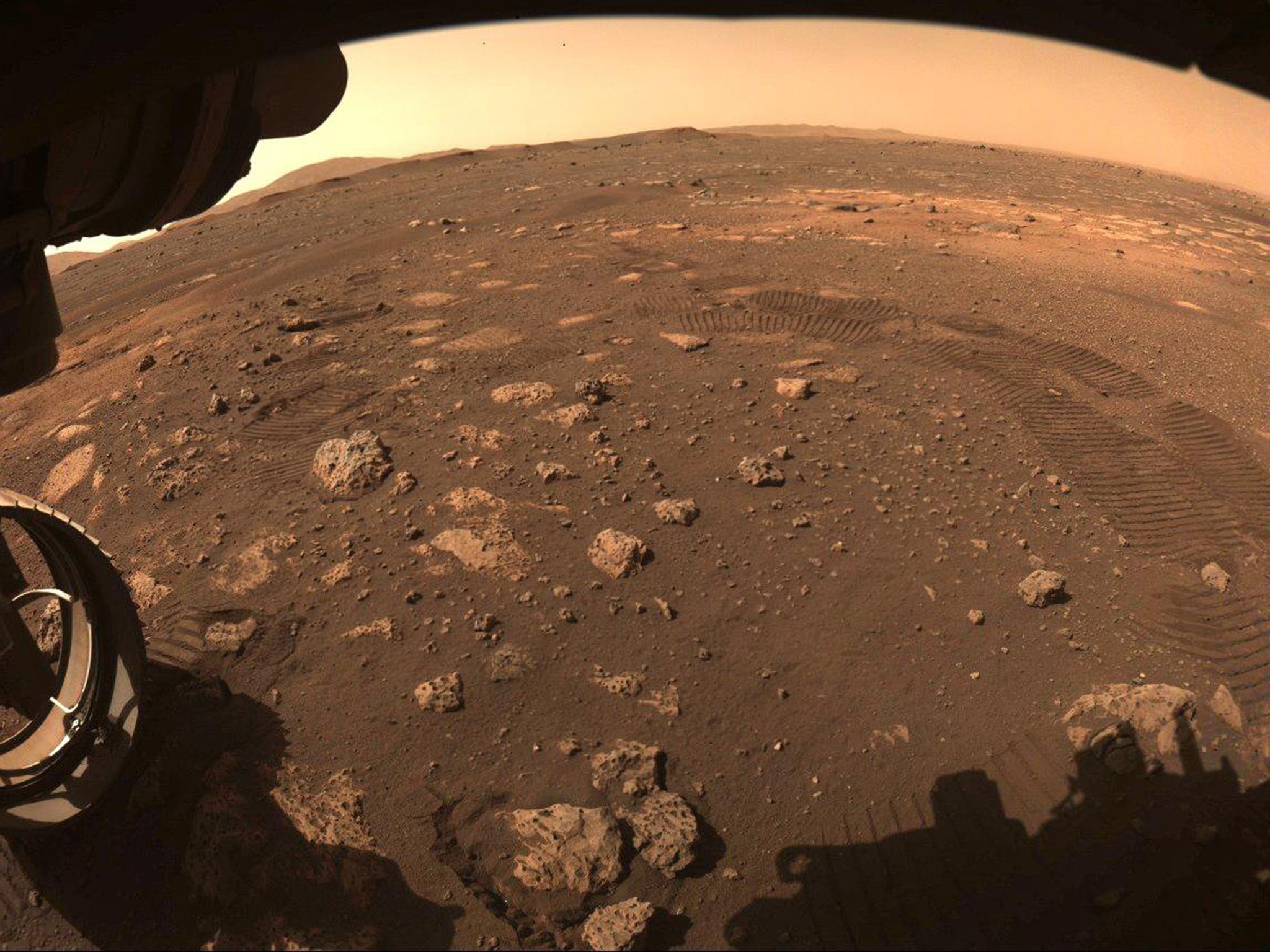Nasa’s Mars rover Perseverance makes first trip since touching down
Engineers hail true ‘start of our journey’ after successful drive
Nasa's newest Mars rover set out on its first test drive this week after remaining in place since landing a fortnight ago.
The six-wheeled Perseverance rover travelled 21 feet on Thursday in a roundabout, back and forth drive which lasted just over half-an-hour.
"This is really the start of our journey here," said Rich Rieber, the Nasa engineer who plotted the route, after more driving was scheduled for Friday and Saturday.
"This is going to be like the Odyssey, adventures along the way, hopefully no Cyclops, and I'm sure there will be stories aplenty written about it."
Setting off for the first time, Perseverance went forward 13 feet from its landing position, took a 150-degree left turn, then backed up eight feet.

"I don't think I've ever been happier to see wheel tracks and I've seen a lot of them," said engineer Anais Zarifian, from Nasa's Jet Propulsion Laboratory (JPL) in Pasadena, California as the agency released photographs of the trip.
“When it comes to wheeled vehicles on other planets, there are few first-time events that measure up in significance to that of the first drive,” Ms Zarifian said.
“We are now confident our drive system is good to go, capable of taking us wherever the science leads us over the next two years.”
Flight controllers continue to check all of Perseverance's systems and everything has gone well so far. The rover's seven-foot robot arm, for instance, successfully extended and contracted for the first time on Tuesday.
Perseverance will soon set out on its mission to collect rocks from an ancient river delta for eventual return to Earth, but it must first drop its so-called protective "belly pan" and release an experimental helicopter named Ingenuity.
As it turns out, the rover landed right on the edge of a potential helicopter landing strip – a suitable flat spot, according to Mr Rieber.
Nasa plans to drive out of this landing strip, ditch the pan, then return for Ingenuity's highly anticipated test flight. All this should be accomplished by late spring.
Scientists are debating whether to take the smoother route to reach the nearby delta or a possibly tougher way passing by intriguing remnants from Mars's watery past, around three billion to four billion years ago.
Perseverance – Nasa's biggest and most advanced rover yet – became the ninth US spacecraft to successfully land on Mars on 18 February.
China hopes to land its rover, which has been orbiting the planet since 10 February, in another few months.
On Friday, Nasa scientists announced they had named Perseverance's landing site in honour of the late science fiction writer Octavia E Butler, who grew up next door to Nasa’s Jet Propulsion Laboratory in Pasadena, California.
Additional reporting by AP



Join our commenting forum
Join thought-provoking conversations, follow other Independent readers and see their replies
Comments